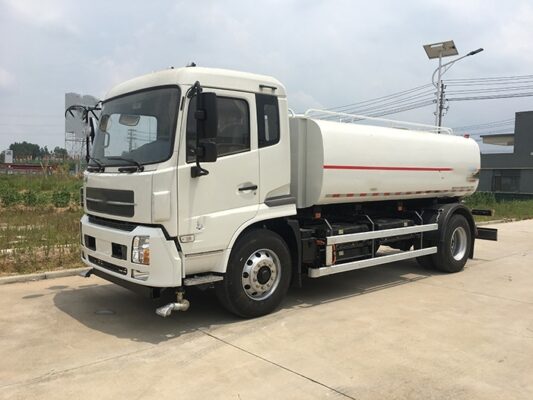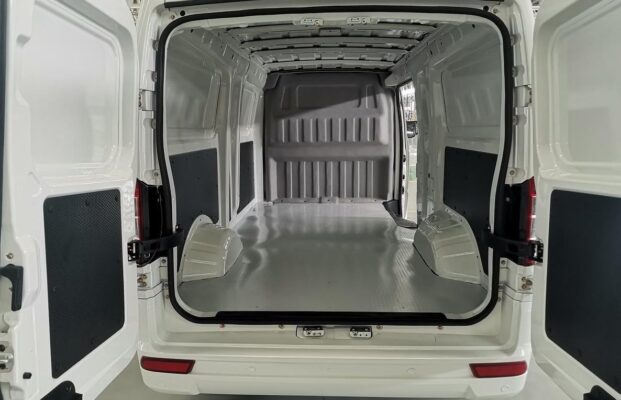Electric Truck News
Operation and Maintenance Experts Share Precautions for Charging in Winter
Posted on by Electric Trucks
Unconsciously, winter has arrived once again, and winter charging has become a topic that everyone is preoccupied with. Lately, an overwhelming number of friends have posed various charging-related questions to us. Therefore, Xiaote has handpicked several representative ones to share with you all.
Hopefully, the charging tips presented in this article will prove beneficial for your vehicle usage!

New energy vehicles also have a need for “warming up”. When the term “warming up” is mentioned, it’s a familiar concept for most, but few would immediately associate it with new energy vehicles. In reality, not only do gasoline vehicles require warming up, but new energy vehicles do as well.
Particularly in the northern regions, where winter night temperatures often dip below 0 degrees Celsius, if the vehicle is exposed to such low temperatures overnight, it is advisable to wait for 1-2 minutes after powering it on the following day. This brief waiting period allows for the preheating of the vehicle’s circuits and battery packs, which can significantly enhance the longevity of the vehicle’s battery.
Let’s delve deeper into this. The extreme cold can have a detrimental effect on the battery’s performance and its internal chemical reactions. By allowing for a preheating period, the battery is gradually brought to an optimal operating temperature, reducing the shock and stress that immediate usage might cause. This gentle start helps to maintain the battery’s integrity and ensures a more stable and efficient power output over time.
Rainy and snowy conditions are common during the winter months, and the air becomes notably humid at such times. Many friends express concerns regarding the potential impact of this increased air humidity on insulation.
Rest assured. Prior to the connection of the charging pile to the vehicle and the initiation of charging, the pile itself remains unpowered, and the charging plug of TellCharge is a powerless plug.
Consequently, during rainy and snowy days in autumn and winter, when you undertake the charging process, as long as the vehicle interface remains dry and free from rain, and the gun head is dry, you can proceed with charging as normal.
It’s important to note that while the charging system is designed to handle such conditions, it’s still advisable to exercise caution and ensure a dry and safe charging environment to minimize any potential risks. Regular inspections of the charging equipment and ensuring proper insulation and protection can go a long way in maintaining a reliable charging experience.

The battery is undoubtedly the core component of our electric vehicles. How to effectively mitigate the attenuation of the vehicle battery is the key to prolonging the lifespan of electric vehicles.
The operation and maintenance experts of TellCharge suggest that you can adopt a combined approach of fast and slow charging based on your travel patterns and requirements. There is no absolute need to exclusively adhere to one particular charging method.
During the process of fast charging, it is recommended to utilize AC slow charging 2-3 times per month. This serves to regulate the consistency of the battery and proves beneficial for extending its lifespan. Simultaneously, it is advisable to cultivate a charging habit of “shallow charging and shallow discharging”. Avoid charging the battery when it is completely depleted and refrain from leaving the vehicle unused for extended periods.
Let’s elaborate on this further. Frequent deep discharges and long periods of inactivity can have a negative impact on the battery’s health. Shallow charging and discharging help to maintain the battery’s chemical balance and prevent excessive stress on the cells. The combination of fast and slow charging also compensates for the different charging characteristics and helps to optimize the battery’s performance and longevity.

- Inaccurate Charging Capacity?
The charging process of electric vehicles is intricately linked to several components: the charging machine, the battery, and the heating and cooling system of the battery.
When an electric vehicle undergoes AC charging, an on-board charging machine is employed. Consequently, during the charging process, there will be rectification losses of the on-board charging machine, charging losses of the vehicle, and losses within the vehicle’s cooling and heating system. The cumulative influence of these three factors leads to the charging capacity displayed by the App being higher than the actual charging capacity of the battery.
When an electric vehicle is charged using DC, the charging machine is located within the charging pile. In such cases, TellCharge assumes the electricity loss throughout the entire charging process. However, when utilizing charging piles of other brands, it is not uncommon for the charging piles to not bear the electricity loss, resulting in a disparity between the DC charging capacity and the battery capacity.
It is worth highlighting that the metering method employed by TellCharge relies on three key tools: the on-site electricity meter, PDU (Power Distribution Unit), and the cloud platform. As long as any anomaly is detected, the charging process will promptly cease, providing you with peace of mind during charging.

- Inconsistent Current Display?
During the AC charging process of an electric vehicle, the App showcases the input AC current, which is approximately 220v and 30A (15A), while the vehicle displays a current of 20A (10A). The reason for this inconsistent display lies in the fact that the DC current displayed within the vehicle is the outcome of the voltage being boosted to approximately 300V, resulting in a reduction in the current.
However, since the power remains constant, your attention should primarily be focused on ensuring the consistency of the power displayed within the vehicle and the App.
In conclusion, understanding and being mindful of these charging nuances and precautions during the winter months is essential for optimizing the performance and longevity of your electric vehicle’s battery. By adhering to these guidelines and maintaining a vigilant approach to charging, you can ensure a reliable and efficient charging experience throughout the winter season and beyond.